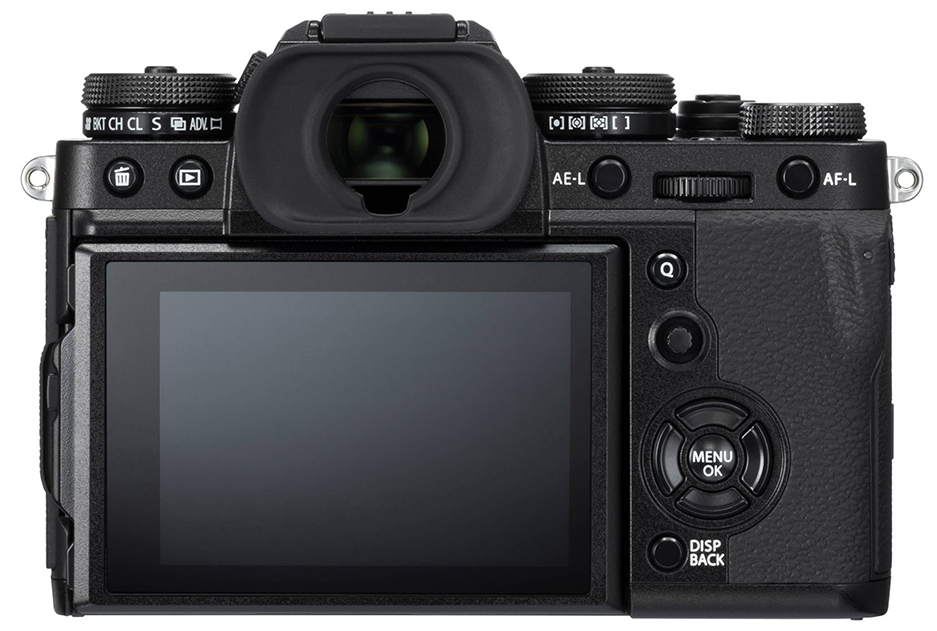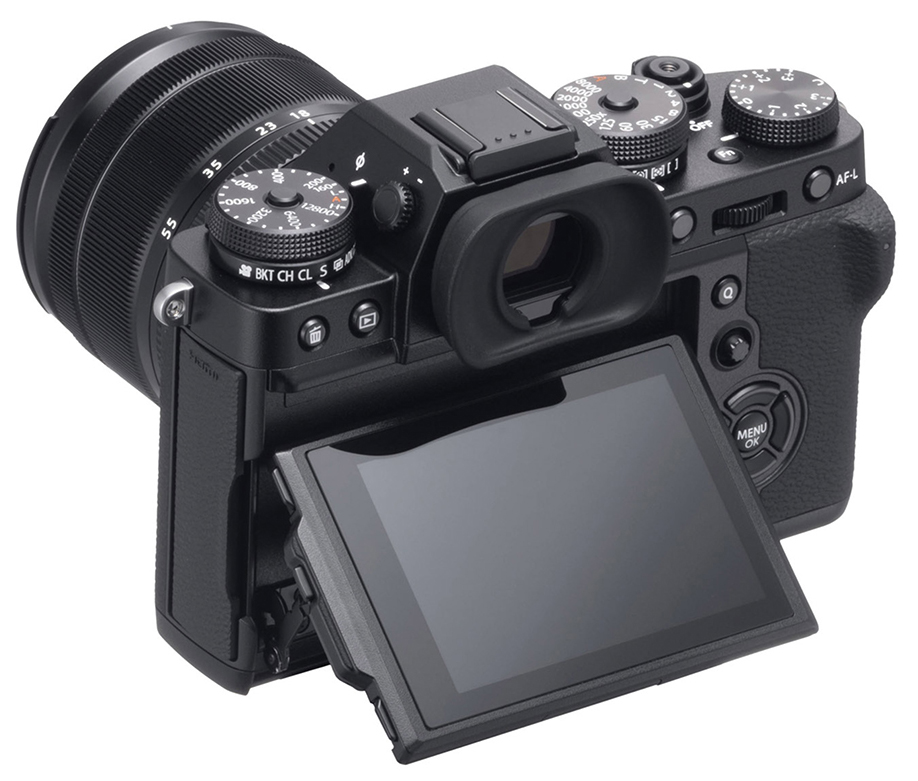Mirrorless Camera Delivers on Performance and Quality
Review by Steve Baczewski
I own a FUJIFILM X-T2, and recently I’ve been shooting with its successor, the X-T3—and it’s been a pleasure. At its core are a new 26.1-megapixel, back-illuminated, CMOS APS-C sensor supported by a new quad-core X-Trans 4 processor. Phase detection is now embedded across the entire sensor. These changes are the basis for the X-T3’s faster focusing (Fuji boasts 1.5x faster), faster burst shooting, and increased AF-C accuracy, whether tracking a model’s face/eyes, capturing fast-moving sports events, or the unpredictable, erratic movements of children and pets.
The X-T3’s video capabilities also got a big boost, including shooting in F-Log, ETERNA, and HD at 120 fps for slow motion footage; the addition of a headphone jack on the body instead of the optional vertical grip; and for optimal quality, you can now film at 4K/60P in 10bit. To support these features, the two memory card slots now use the fast UHS-II cards.

The X-T3’s Boost mode is now built into the body. Prior to the X-T3, you needed the vertical grip with its two extra batteries for Boost mode. On the X-T3 the Boost mode speeds up the camera’s autofocus, and increases the refresh rate of the electronic viewfinder from 60 fps to 100 fps with no blackouts during continuous high-burst shooting; however, it shortens the already modest battery life. The X-T3 now shoots 11 fps with the mechanical shutter, 20 fps with the electronic shutter, and up to 30 fps with the electronic shutter using a 1.25x crop of the sensor size. Impressive! When panning, however, I suggest using the mechanical shutter
because the X-T3 suffers from rolling shutter in the electronic mode, resulting in distorted and skewed vertical objects.
Transitioning to the X-T3 from the X-T2 is simple. It looks like the X-T2 with the same buttons and dials in the same location. Its analog styling pays homage to the practical side of film cameras. The three large dials for exposure are on top: ISO, shutter speed, and exposure compensation. To adjust the aperture, Fuji lenses have an aperture ring as an adjunct to the usual rear digital control dial. This is a practical and intuitive solution to improve performance in the field.
The solid, compact, magnesium-alloy weather-sealed body has a shallow grip that might become an issue for some when using long lenses. The X-T3 is light when compared to a DSLR—you can carry it with two lenses all day long.
Fuji lets you customize the body with 13 functions from the main menu, including an innovative approach to touchscreen technology. The LCD responds to swiping so you can customize four functions by swiping the LCD up, down, right, and left. This is Fuji’s first implementation of touch technology, and besides moving the focus point and triggering the shutter from the LCD, you can navigate the quick access menu, as well as swipe, enlarge, and navigate images in playback mode.
The EVF has a higher 3.69 million-dot resolution, and composing with it or the 3″ horizontal and vertical articulating LCD can handle almost every angle and situation. Sadly, the LCD doesn’t articulate 180° to face front.

Among my favorite new features are: Fuji’s black-and-white ACROS film simulation now uses red, yellow, and green filters to adjust the tonal values. There’s also a new adjustment slider that lets you apply warm and cool tones. The new Sports Viewfinder mode has become a personal favorite. It places a frame within the viewing area, cropping the sensor 1.25x and dropping the file size to 16 megapixels. It’s very useful in composing, as you can watch subjects moving into the active area.
My absolute favorite is automated focus bracketing, aimed at macro photographers to deal with shallow depth of field, and landscape photographers who à la Ansel Adams want everything near to far in focus. You can take up to 999 files, setting the distance and time interval between frames. You’ll need an application such as Helicon Focus, Photoshop, or Lightroom to combine the images.
I have a few caveats: The X-T3 has no built-in image stabilization (IBIS), and while power demands have increased, battery life has barely improved. Interestingly, Adobe Photoshop Lightroom isn’t the best RAW processor for Fuji’s RAF files. By comparison, Capture One clearly improves on the color and overall highlight and shadow detail. File quality is among the best I’ve seen.
This is the finest APS-C camera I’ve used, and Fuji lenses are of a consistently high quality, so I have no hesitation recommending this camera. ■






